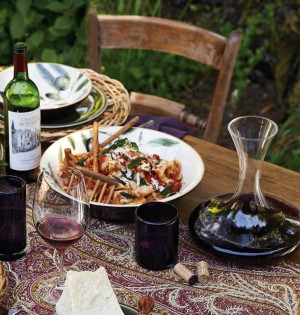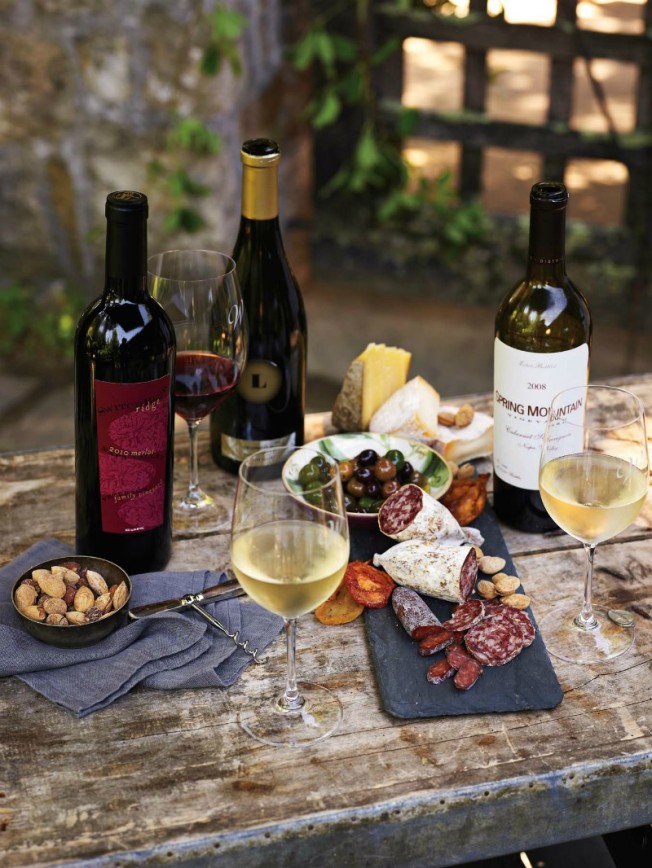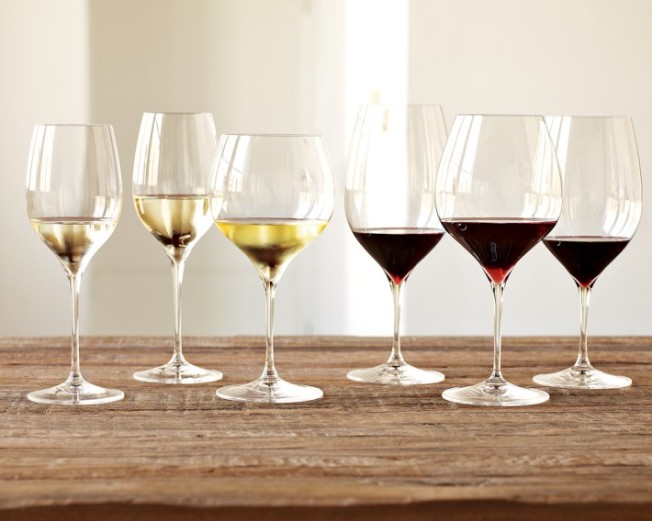No matter what kind of wine you’re drinking — a bubbly Prosecco, crisp rosé or aged Cabernet Sauvignon — you want it to taste its best. There are plenty of rituals related to serving wine, but all are intended to highlight the wine’s flavors and create the most enjoyable experience possible. Here are a few tips, techniques and ideas to keep in mind when serving wine at home.
To open a b0ttle of wine, first use the knife on a corkscrew to slice the foil as you turn the bottle and remove the foil. Then, screw the corkscrew firmly into the center of the cork, nearly all the way in. Using the lip of the bottle for leverage, pull out the cork with a slow, steady motion. A screw cap keeps wine just as well as a cork does, so don’t shy away from screw-top bottles, either.
For sparkling wines, you don’t need a corkscrew. Just hold the bottle at a 45-degree angle and keep a thumb over the cork, then remove the foil and wire cage. Slowly twist the bottle off the cork, pointing the bottle away from you to avoid causing any injury.
 Aerating wine, or pouring into a glass or decanter to let it “breathe,” helps expose it to air, which is especially valuable when you’re drinking a bold red. When serving a vintage port or an older red wine that might contain sediment, you should decant for clarity, leaving the sediment in the bottle. At the other end of the scale, some very young wines should be vigorously decanted to soften their tannins — let it glug and splash.
Aerating wine, or pouring into a glass or decanter to let it “breathe,” helps expose it to air, which is especially valuable when you’re drinking a bold red. When serving a vintage port or an older red wine that might contain sediment, you should decant for clarity, leaving the sediment in the bottle. At the other end of the scale, some very young wines should be vigorously decanted to soften their tannins — let it glug and splash.
Older wines should be decanted just before drinking to best showcase their bouquets. Younger wines benefit from being left in the decanter for several hours before drinking.
Wine doesn’t breathe in the bottle — it is only aerated by the act of pouring. If you don’t want to bother with decanting, pour it into a glass an hour or two before you plan to drink it. To avoid drips that slide down the side of the bottle, rotate the bottle as you stop pouring.
Full-bodied red wines should be served at cool room temperature, while light whites benefit from chilling for 20 minutes in ice water or the freezer or an hour in the fridge. Don’t forget about wine in the freezer — it will break if left in there too long.
Full-bodied whites, rosés and lighter-bodied reds fall somewhere in between: a lush Viognier, although white, shouldn’t be too cold, which might make its tropical fruit flavors. A light rosé, Beaujolais or even Pinot Noir can be served lightly chilled, especially in summer. Dessert wines and port are generally served at cool room temperature.
Ice buckets or wine coolers filled with a mixture of ice and water are efficient and ideal for chilling. Once the wine is chilled, you can keep it at the correct temperature at the table for a few hours by placing the bottle in an insulated container.
If you want to take the chill off red wine, one method is to decant the wine into a decanter warmed with hot water. Or, pour out a few glasses in a warm room. Never apply direct heat to the bottle.
There are times when a tumbler full of red wine, served to friends with a bowl of pasta, is all you need. But most of the time, if you’ve taken the trouble to select a bottle you’re excited about, why not give it proper treatment?
The different shapes of wine glasses are designed to show off the characteristics of the type of wine being served. See which glasses to pair with which varietals here. You can decide how to serve wine at home based on the character of the wine and the mood you want to create.
The stem of a traditional wine glass acts as a handle, allowing you to hold the glass without touching the bowl so you don’t heat up the wine with your hands. It also protects the bowl from fingerprints so you can appreciate the color of the wine.
Find more tips for choosing, tasting and pairing wine in our full Guide to Wine.



1 comment
[…] https://blog.williams-sonoma.com/how-to-serve-wine/ […]